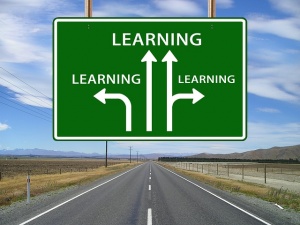
Integrating learning activities
The integration of learning activities helps to promote interaction, encourage reflection and generate opportunities for learners to create and share artefacts through a learn-by-doing process.
There are many ways to achieve this through thoughtful design and breaking up the content to embed, for example: peer interactions, case studies, scenarios, quizzes etc. In WikiEducator we signal learning activities using pedagogical templates (IDevices).
In this learning pathway we encourage authors to think creatively about the range of predefined template types which could be embedded in the learning pathways you are developing for this course. However, the question of learning activities is closely related to pedagogical challenges associated with open design including how to promote peer-to-peer learning interactions and considerations for developing materials for independent study without reliance on traditional learning management systems to facilitate reuse in different delivery contexts.
Before commencing with the development of your learning pathways, it will be useful to think about the kind of learning activities you could embed in your resources.
Designing for peer-to-peer learning interactions
Interaction equivalency theorem
The Interaction Equivalency Theorem developed by Terry Anderson posits that "if any one of student-student, student-teacher or student-content interaction is of a high quality, the other two can be reduced or even eliminated without impairing the learning experience. (Anderson 2003[1])." There is a considerable body of research evidence to support the theorem.
The OERu international collaboration is designing and developing courses for independent self-study to widen access to free learning opportunities for those who can't afford a tertiary education or unable to access education due to lack of provision. Providing tutorial support services in the absence of tuition fees or government grant to fund the salaries of educators to provide quality learner support is not a sustainable or scalable solution. Conceivably, there are two sustainable alternatives to improving support for learners taking free online courses:
- Drawing on the Interaction equivalency theorem, design courses which incorporate and encourage peer-to-peer learning support combined with high quality student-content interactions as a substitute for student-teacher interactions. For example, in a large open class involving hundreds of learners, what is the probability of a few learners knowing the answer to a question or the ability to work together in finding the answer?
- Building and promoting a system of Academic Volunteers International where retired academics or senior learners could provide support on a volunteer basis.
Reflections
- Are these ideas for scaling affordable access to higher education plausible?
- What are the implications for course design?
Microblog post
Share your thoughts on these questions on WEnotes below, OERu forums or Twitter and include the hash tag "ds4oer" if posting on Twitter. For example:
- I think that ... #ds4oer
- P2P learning means ... #ds4oer
Notes
- ↑ See the The Interaction Equivalency Website
